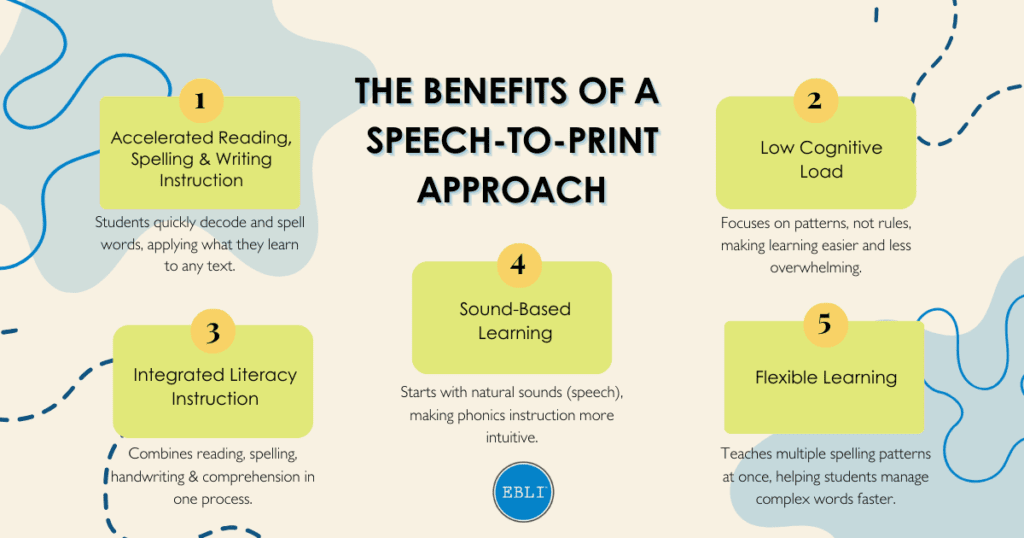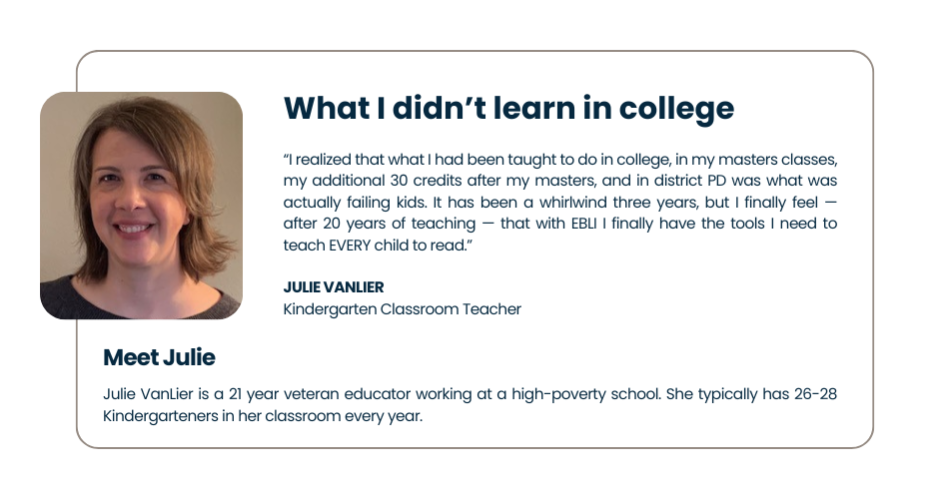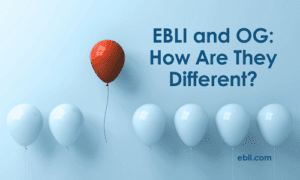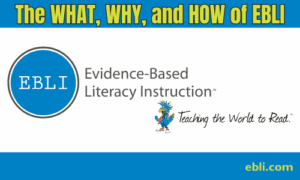Reading is a fundamental skill that opens doors to knowledge, imagination, and success. However, teaching children to read effectively has been debated and researched for decades. Among the various methodologies that have emerged, including balanced literacy, traditional phonics or a Print-to-Speech approach, and Structured Linguistic Literacy (SLL) or a Speech-to-Print approach, educators and private practitioners are discovering that a Speech-to-Print instructional approach stands out as particularly efficient and effective. This article covers the benefits of Structured Linguistic Literacy methodology, examining its principles, benefits, and how it compares to traditional reading instruction techniques.
What is Speech-to-Print?
Speech-to-Print methodology, also known as Structured Linguistic Literacy (SLL) or Linguistic Phonics (LP), is a systematic and explicit approach to teaching reading and writing. Unlike traditional methods that begin with letters and their sounds, Speech to Print starts with the spoken language – the sounds from the words we speak- and then matches the spellings (graphemes) to the sounds (phonemes).
The core principle of Structured Linguistic Literacy is that spoken language is the foundation of written language as opposed to the other way around. This approach recognizes that children come to school with a well-developed ability to use spoken language and brains that naturally recognize patterns, and it leverages these strengths to teach reading and writing.
Speech-to-Print approaches provide explicit instruction in the concepts that are the foundational basis of the English alphabetic code, which circumvents the need to teach students an excessive amount of the code. Once students have a firm understanding of how the code functions, they can transition more quickly to implicit learning or self-teaching. This important distinction accelerates the acquisition of accurate, automatic reading and writing.
Key Principles of Speech-to-Print/Structured Linguistic Literacy:
- Sound-First Approach: Instruction begins with identifying and manipulating the sounds (phonemes) in spoken words before introducing their written representations.
- Integrated Skills: Reading, writing, and spelling are taught simultaneously, reinforcing each other.
- Pattern Recognition: Instead of teaching rigid rules, students learn flexible spelling patterns that can be applied to many words.
- Contextual Learning: Sounds are taught in the context of words, not in isolation.
- Orthographic Mapping: From the outset, students learn to connect the sounds in words (phonemes) to their spellings (graphemes), facilitating automatic word recognition.
The Science Behind Speech-to-Print
The effectiveness of Speech-to-Print is rooted in cognitive science and research on how the brain processes language. Dr. Mark Seidenberg, a cognitive scientist and expert in the Science of Reading, has contributed significantly to our understanding of the reading process.
Seidenberg’s research emphasizes the importance of phonological awareness and the ability to map sounds to letters in learning to read. He describes a phenomenon he calls “escape velocity,” where students transition from explicit instruction to self-teaching. Speech to Print methodology aims to achieve this transition efficiently.
The process works as follows:
- Students are explicitly taught how the English alphabetic code works.
- They learn to apply these concepts to all words.
- As their skills develop, they require less support and can increasingly teach themselves new words.
This approach aligns with what cognitive scientists call the “Simple View of Reading,” which posits that reading comprehension is the product of decoding ability and language comprehension.
Speech-to-Print vs. Traditional Print-to-Speech Methods
To understand the benefits of Speech-to-Print or Structured Linguistic Literacy, it’s helpful to compare it to more traditional Print-to-Speech methods, often referred to as Structured Literacy. While both approaches have merits, they differ significantly in their methodology and outcomes.
| Speech-to Print | Print-to-Speech | |
| Starting Point | Spoken sounds (phonemes) | Letter names and sounds |
| Approach to Words | Flexible patterns | Rules and exceptions |
| High- Frequency Words | Taught explicitly by sound, the same as with all words | Often memorized, either the irregular graphemes or as whole words |
| Multi- syllable Words | Split based on pronunciation | Taught using syllable types |
| Instruction Speed | Allows for accelerated learning | Often requires mastery before moving on |
| Cognitive Load | Generally lower, pattern recognition is applied in the context of words, with no need for rules or declarative knowledge | Often higher due to memorization of rules, syllable types, and declarative knowledge |
| Handwriting | Integrated into reading and spelling instruction | Taught separately or not taught |
| Spelling Instruction | Integrated with reading | Often taught separately |
| Intervention Time | Average: 12-24 hours | Average: 2-4 sessions/week for 2-4 years |
Benefits of Speech-to-Print
The Speech to Print method offers several advantages:
- Efficiency: By starting with sounds students already know, the learning process is accelerated.
- Inclusivity: This method has shown significant success with all students, including those who struggle with traditional reading instruction and students diagnosed with dyslexia.
- Reduced Cognitive Load: By focusing on patterns rather than rules, students often find the process less mentally taxing.
- Integrated Skills: The simultaneous teaching of reading, writing, and spelling reinforces learning across all areas.
- Flexibility: Students learn to approach unfamiliar words with confidence, applying their knowledge of sound-spelling relationships.
- Rapid Progress: Many students advance quickly to reading a wide range of texts.

Implementing Speech-to-Print in the Classroom
For educators interested in incorporating Speech to Print methods into their teaching, here are some practical strategies:
- Begin with Phonemic Awareness: Start lessons by identifying and manipulating sounds in spoken words. This can include activities like sound blending, segmenting, and substitution.
- Use Natural Speech: Teach words as they’re pronounced, allowing for flexibility and ease of instruction regardless of dialect. For example, the word “car” is three sounds, c /k/, a /o/, r /r/ in the US and c /k/ ar /o/ in Australia, New Zealand, and most parts of England.
- Integrate Skills: Combine reading, writing, and spelling instruction in each lesson. For instance, after identifying sounds in a spoken word, students write the word and then read it back.
- Teach Flexible Patterns: Instead of rigid rules, help students notice and apply spelling patterns flexibly. For example, the long /a/ sound can be spelled in multiple ways (a, ai, ay, ea, e, eigh, ey).
- Use Word Sorts: Have students sort words based on their sounds and spellings to reinforce pattern recognition.
- Progress Based on Student Readiness: Don’t hold students back if they’re ready to move on to more complex text. The Speech-to-Print method allows for accelerated learning.
- Incorporate Multisensory Activities: Students see, hear, say, and write at the same time, allowing for rapid integration of the code knowledge and transferring that information to additional words with the same graphemes, morphemes, and patterns.
Julie’s full story including student examples and results:
What I Didn’t Learn in College: A Kindergarten Teacher’s Story
Speech to Print: Challenges and Considerations
While Speech to Print has shown impressive results, it’s important to note that implementing this method can come with challenges:
- Teacher Training: Educators may need additional training to effectively implement Speech-to-Print methods, as it differs significantly from traditional teaching approaches.
- Resource Adaptation: Existing teaching materials may need to be adapted or replaced to align with Structured Linguistic Literacy principles.
- Assessment Alignment: Standard reading assessments may not fully capture the progress of students learning through Speech-to-Print methods, particularly in the early stages.
- Parental Understanding: Parents accustomed to traditional methods may need education about the Speech-to-Print approach to support their children effectively.
The Future of Reading Instruction
As our understanding of the reading process continues to evolve, methods like Speech-to- Print are likely to play an increasingly important role in literacy education. The focus is shifting from debates about ideology to a more evidence-based approach that prioritizes student outcomes.
Key areas for future research and development include:
- Long-term studies on the effects of the Speech to Print approach
- Development of standardized assessments that align with Speech to Print methodologies
- Integration of Speech-to-Print principles with digital learning tools
- The impact of Speech-to-Print methodology on English language learners and exploring the need for inclusion of additional language and vocabulary in their instruction
Speech-to-Print: Effective, Efficient Reading Instruction
Speech-to-Print represents a significant advancement in reading instruction. By aligning teaching methods with how the brain processes language, it offers an efficient and effective path to literacy for many students, including those who struggle with traditional approaches.
As with any educational method, the key to success lies in thoughtful implementation, ongoing assessment, and a willingness to adapt based on student needs. SLL provides educators with a powerful tool to help students not just learn to read, but to become confident, skilled readers who enjoy the process of engaging with text.
By focusing on student outcomes and continually refining our instructional practices, we can move beyond historical debates about reading instruction and towards more effective teaching methods that serve all learners.
Join Us in Transforming Literacy Education
Your commitment to improving literacy is commendable. By exploring innovative methods like Speech-to-Print, you’re taking a crucial step toward empowering learners of all abilities. Remember, every child you help to read is a life forever changed.
But why stop here? Dive deeper into the world of Speech-to-Print and elevate your teaching skills even further.
Ready to revolutionize your approach to reading instruction?
Join us for EBLI’s exclusive, free webinar: Speech-to-Print vs Speech-to-Print
In this comprehensive session, you’ll learn:
- What is speech-to-print phonics?
- What is print-to-speech phonics?
- How does speech-to-print differ from print-to-speech?
- EBLI Founder answers to attendee’s questions
Don’t miss this opportunity to be at the forefront of literacy education. Together, we can unlock the power of reading for every learner. Click here to register now.

Nora Chahbazi, B.S.
Founder, EBLI Evidence-Based Literacy Instruction
Nora has dedicated over 25 years to improving reading instruction. She founded EBLI: Evidence-Based Literacy Instruction and has trained thousands of educators worldwide, teaching learners of all ages and abilities.
She has spoken at numerous conferences, including Plain Talk for Literacy and The Reading League. Nora collaborates with schools as well as organizations focused on implementing research-based teaching practices to promote high-level literacy for all.
Nora served as the literacy consultant for the documentary The Truth About Reading and participated in discussions after screenings, including at the SXSW film festival. She is on the board of The Reading League Michigan.
Nora has appeared in various media, including Emily Hanford’s Sold a Story podcast, the PBS documentary Building the Reading Brain, and an interview on Oprah Radio with Maya Angelou.
She is committed to the mission of teaching the world to read.






1 Comment
[…] SOR is not the monolithic group that some make it out to be. Some SOR advocates call for using speech-to-print phonics rather than print-to-speech phonics, which synthetic phonics advocates champion. LINK […]
Comments are closed.